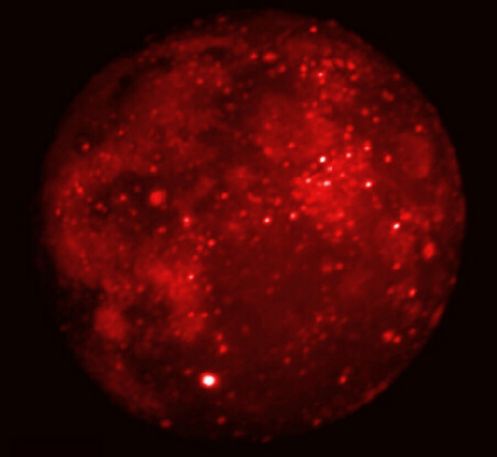Credit & Copyright: DCATT Team,
MSX Project
Explanation:
In September of 1996,
the Midcourse
Space Experiment (MSX) satellite had a spectacular view of
a total lunar eclipse
from Earth orbit.
SPIRIT III, an on board infrared telescope, was used to
repeatedly image the moon
during the eclipse.
Above is one of
the images taken during the 70 minute totality, the Moon completely
immersed in the Earth's shadow.
Infrared light
has wavelengths
longer than visible light - humans can not see it but
feel it as heat.
So, the bright spots correspond to the warm areas on
the lunar surface,
and dark areas are cooler.
The brightest spot below and left of center is the
crater Tycho, while
the dark region at the upper right is
the Mare Crisium.
Of course, this
Sunday's lunar eclipse
will not be a total, or even a partial one.
Instead, the Moon will glide
through the subtle outer portion
of the Earth's shadow in a penumbral
eclipse
of the Moon.
1999 2000 2001 2002 2003 2004 2005 2006 2007 2008 2009 2010 2011 2012 2013 2014 2015 2016 2017 2018 2019 2020 2021 2022 2023 2024 2025 |
Январь Февраль Март Апрель Май Июнь Июль Август Сентябрь Октябрь Ноябрь Декабрь |
NASA Web Site Statements, Warnings, and Disclaimers
NASA Official: Jay Norris. Specific rights apply.
A service of: LHEA at NASA / GSFC
& Michigan Tech. U.
|
Публикации с ключевыми словами:
Moon - infrared - lunar eclipse - инфракрасное излучение - лунное затмение - Луна
Публикации со словами: Moon - infrared - lunar eclipse - инфракрасное излучение - лунное затмение - Луна | |
См. также:
Все публикации на ту же тему >> | |
